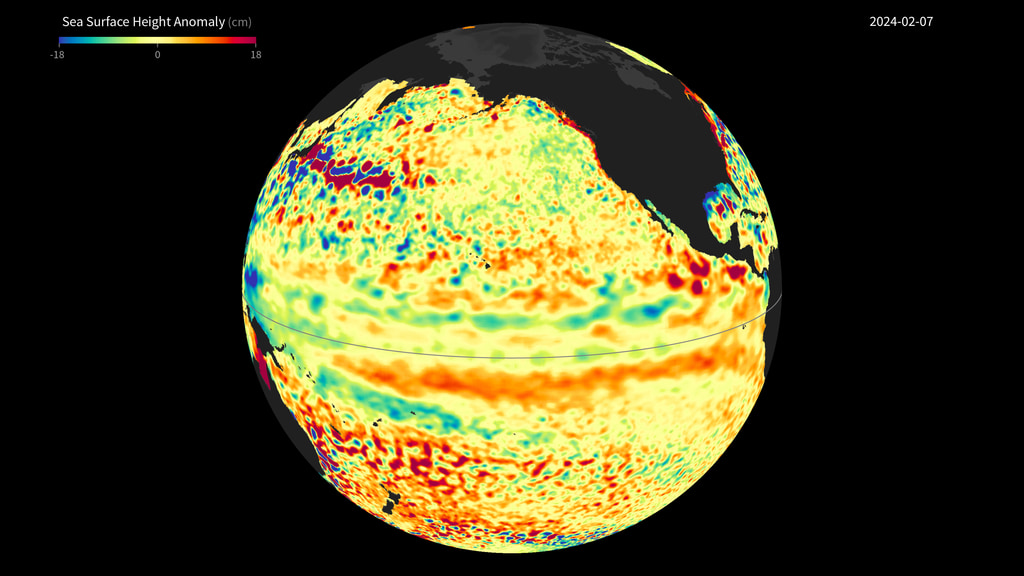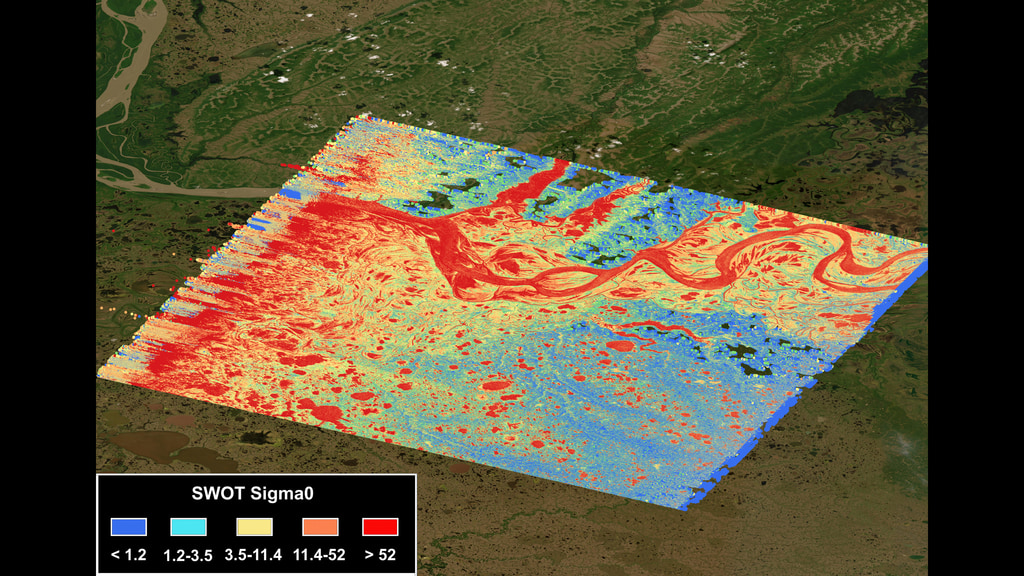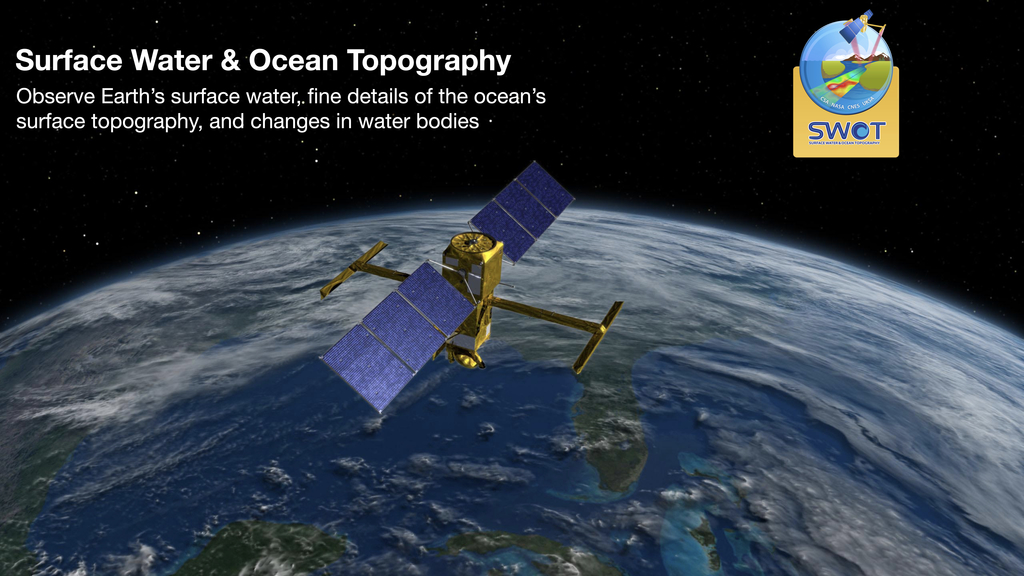SWOT Monitors Warming Waters Off California Coast
Full Resolution

This data visualization image above shows sea surface heights off the northern California coast in August 2023 as measured by the Surface Water and Ocean Topography (SWOT) satellite.
This is a hyperwall formatted version of an image originally published at https://photojournal.jpl.nasa.gov/catalog/PIA26091
This data visualization image above shows sea surface heights off the northern California coast in August 2023 as measured by the Surface Water and Ocean Topography (SWOT) satellite. Red indicates higher-than-average ocean heights, while blue represents lower-than-average heights.
Warm ocean waters from the developing El Niño are shifting north along coastlines in the eastern Pacific Ocean. Along the coast of California, these warm waters are interacting with a persistent marine heat wave that recently influenced the development of Hurricane Hilary. SWOT is able to spot the movement of these warm ocean waters in unprecedented detail.
The SWOT science team made the measurements with the Ka-band Radar Interferometer (KaRIn) instrument. With two antennas spread 33 feet (10 meters) apart on a boom, KaRIn produces a pair of data swaths as it circles the globe, bouncing radar pulses off the water's surface to collect water-height measurements. The visualization combines data from two passes of the SWOT satellite.
For More Information
Credits
Please give credit for this item to:
NASA/JPL-Caltech
-
Technical support
- Marit Jentoft-Nilsen (Global Science and Technology, Inc.)
Release date
This page was originally published on Wednesday, September 27, 2023.
This page was last updated on Monday, January 13, 2025 at 12:31 AM EST.


